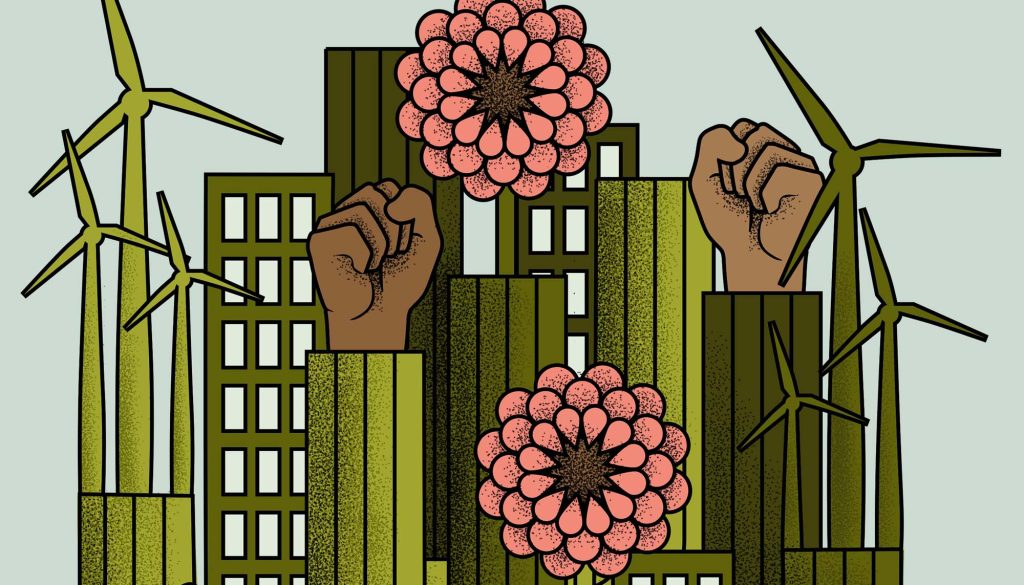Ever heard of the green new deal? Maybe you’ve encountered the words scattered around in climate change discussions and political rallies, yet you’ve never really understood what it’s all about. Not to worry, this article will demystify everything for you. From the underlying principles to the unique provisions it champions for, the green new deal will be a crystal clear concept in your arsenal by the end of this write-up. Let’s delve into it.
Underlying Principles of the Green New Deal
The green new deal, often referred to as a transformative approach to environmental and economic issues, encompasses the United States government’s efforts to address climate change and economic inequality simultaneously. This radical legislation is layered on the foundations of augmenting the clean renewable energy sector, wiping out greenhouse gas emissions, and fostering a just transition for fossil fuel industry workers.
Key Insights
The green new deal urges us to rethink our traditional energy sources and the impacts of our actions. It reminds us that climate change isn’t just an environmental issue – it’s a social and economic one too.
It stimulates job creation in the renewable energy sector, consequently helping to reduce income inequality. Similarly, it advocates for universal healthcare and affordable education, again, putting social justice at the forefront.
Tracing the Origins of the Green New Deal
The term “new deal” takes us back to the 1930s when President Franklin Roosevelt initiated reforms to recover from the Great Depression. Recently, a fresh emphasis on climate action has integrated the principles of the original new deal to create what is now called the green new deal.
Conceived by New York’s representative Alexandria Ocasio-Cortez and Senator Ed Markey, the green new deal resolution has seen the backing of groups like the Sunrise Movement.
Unpacking the Provisions of the Green New Deal
At its core, the green new deal seeks to transition the United States from fossil fuels to renewable energy sources by 2030. It aims for net zero carbon emissions, ultimately mitigating the effects of climate change and global warming.
The plan places tremendous emphasis on job creation in the clean energy sector, to ensure those currently employed in fossil fuel industries can maintain their economic stability.
Green New Deal’s Influence in the 2020 Elections
During the 2020 presidential elections, the green new deal resolution was a primary push-and-pull factor. Progressive Democrats ardently supported the deal for its strong climate action stances, while Republicans argued over its massive costs and ambitious targets.
Evaluating the Impact of Biden’s Clean Energy Revolution
Upon taking office, President Joe Biden launched a vigorous clean energy revolution, which deeply resonates with the green new deal’s principles. With his commitment to reducing greenhouse gas emissions by 50% by 2030, Biden’s administration has fueled the green new deal’s momentum, adding more potency to the fight against climate change.
The Implications of the Green New Deal
Advantages
The advantages of the green new deal are manifold. By moving away from fossil fuels towards renewable energy, we can effectively curb our carbon emissions and address climate change. Simultaneously, by mobilizing green jobs, we can address employment and income inequalities, creating an economy that’s not just sustainable but equitable too.
Detractors
Critics point to the enormous estimated costs associated with the green new deal, casting doubts on its economic feasibility. Others argue that the goal of attaining net-zero emissions by 2030 is overly ambitious and possibly unrealistic.
However, advocates of the green new deal argue that the cost of inaction—catastrophic weather events, the loss of biodiversity, health problems linked to pollution—is far greater.

Investing in a Green New Deal Economy
Investing in a green new deal economy means putting our money into renewable energy infrastructure, green jobs and technologies, sustainable economic growth, and structures that foster social justice.
Estimated Costs of the Green New Deal
Estimates put the cost of the green new deal at around $93 trillion. However, it’s important to note that this figure doesn’t account for the positive economic effects, such as job growth and better health due to cleaner air.
Creators of the Green New Deal
The creators of the green new deal, Alexandria Ocasio-Cortez, a congresswoman from New York, and Senator Ed Markey from Massachusetts, have been prominent figures in pushing for stronger environmental policy in the United States.
Job Creation Potential of the Green New Deal
The green new deal holds a mammoth potential for job creation. By incentivizing clean renewable energy businesses, the green new deal can stimulate a boom in green jobs – from solar panel installers to electric vehicle engineers.
In summary, the green new deal presents a transformative approach to how we view the twin challenges of climate change and economic inequality. Although it has its detractors, the green new deal offers a new and exciting vision for a greener, more equitable future. In the face of the perilous threats posed by climate change and economic disparity, it’s arguably a gamble worth taking. After all, our own survival and that of future generations hinge on our willingness to chart a bold new course. Is there any other choice?

